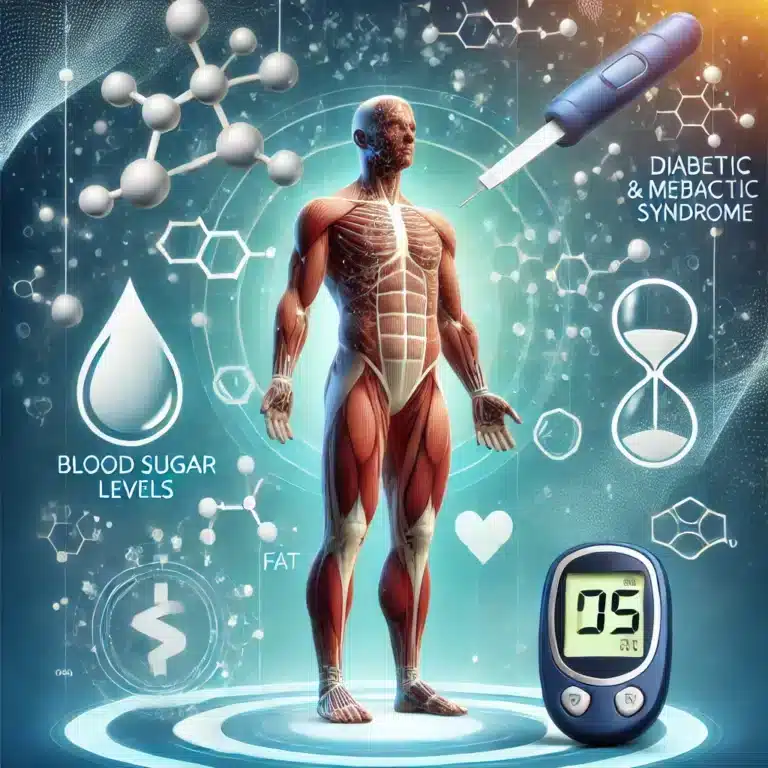Summary
- Changes in CT body composition biomarkers were observed from normal to prediabetic to diabetic Hb A1c ranges, indicating physiologic changes of metabolic syndrome starting in the pre-diabetic phase.
- Certain biomarkers, such as visceral adipose tissue area and kidney volume, increased with higher HbA1c levels, showing a stepwise trend with increasing glycemic control.
- VAT area plateaued in the diabetic category and did not significantly change in poorly controlled diabetic patients, suggesting a limit to its increase with worsening glycemic control.
- Liver attenuation decreased with increasing HbA1c, indicating hepatic steatosis, while muscle area increased but muscle density decreased, possibly due to increased myosteatosis.
- This study provides insights into the multisystemic physiologic effects of diabetes and metabolic syndrome at various levels of glycemic control, offering potential for better understanding and measurement of these conditions using imaging biomarkers extracted from CT scans.
A recent study conducted by researchers has shed light on the impact of diabetes on body composition. The study analyzed various CT body composition biomarkers in individuals with different levels of glycemic control, from normal to prediabetic to diabetic ranges.
Changes in Body Composition Biomarkers
The findings revealed significant changes in most CT body composition biomarkers, except for bone mineral density, in individuals with prediabetic and diabetic Hb A1c levels. Interestingly, the trabecular density of the L1 vertebral body remained consistent across all glycemic control ranges, acting as a control variable.
Increasing Trends in Body Composition
The researchers observed a trend of increasing CT biomarkers related to body composition bulk, including visceral adipose tissue (VAT) area, kidney volume, liver volume, and muscle area, with rising HbA1c levels. These changes were generally consistent across all groups, with a stepwise increase from normal to prediabetic to diabetic ranges.
Plateauing of Visceral Adipose Tissue Area
While VAT area increased significantly with higher HbA1c levels, the researchers noted that this increase plateaued in individuals with poorly controlled diabetes. The ratio of VAT to subcutaneous adipose tissue (SAT) area also showed sex-dependent changes in adipose tissue distribution.
Associations with Liver Attenuation and Muscle Composition
The study also found a significant decrease in liver attenuation with increasing HbA1c levels, indicating hepatic steatosis. Moreover, there was an increase in muscle area but a decrease in muscle density with rising HbA1c levels, suggesting the presence of myosteatosis.
Implications for Renal Size and Function
The researchers observed an increase in renal size with higher HbA1c levels, reflecting compensatory changes in renal function as the kidneys excrete glucose. However, chronic poor glycemic control can lead to renal atrophy and end-stage renal disease.
Limitations and Future Directions
While the study provided valuable insights into the effects of diabetes on body composition, there were limitations such as the retrospective nature of the analysis and the timing of HbA1c measurements. Future studies may benefit from prospective or multi-center approaches to overcome these limitations.
Conclusion
In conclusion, this study highlights the multisystemic effects of diabetes on body composition and metabolic syndrome. By analyzing CT body composition biomarkers, researchers can better understand the physiological changes associated with diabetes and glycemic control. These findings may have implications for predicting metabolic syndrome and guiding treatment strategies in patients with diabetes.
By offering new insights into the physiological effects of diabetes, this research opens up possibilities for improving the management of metabolic syndrome and related conditions. Through further studies and advancements in technology, healthcare professionals can leverage imaging biomarkers to enhance patient care and outcomes in diabetes management.
Diabetes & Endocrinology, Radiology, Internal Medicine


